An Odyssey of Discovery

On this very special day, one year ago, we unveiled AKASHA and called for brave people to join us in the quest for a better Web. It was a complete shot in the dark but we were cautiously optimistic. Luckily, the response exceeded even our most optimistic expectations. While some of us we were secretly hoping to reach 100 signups in the first month; over 200 people signed up in less than 24 hours.
In less than a month we surpassed 2000 people.
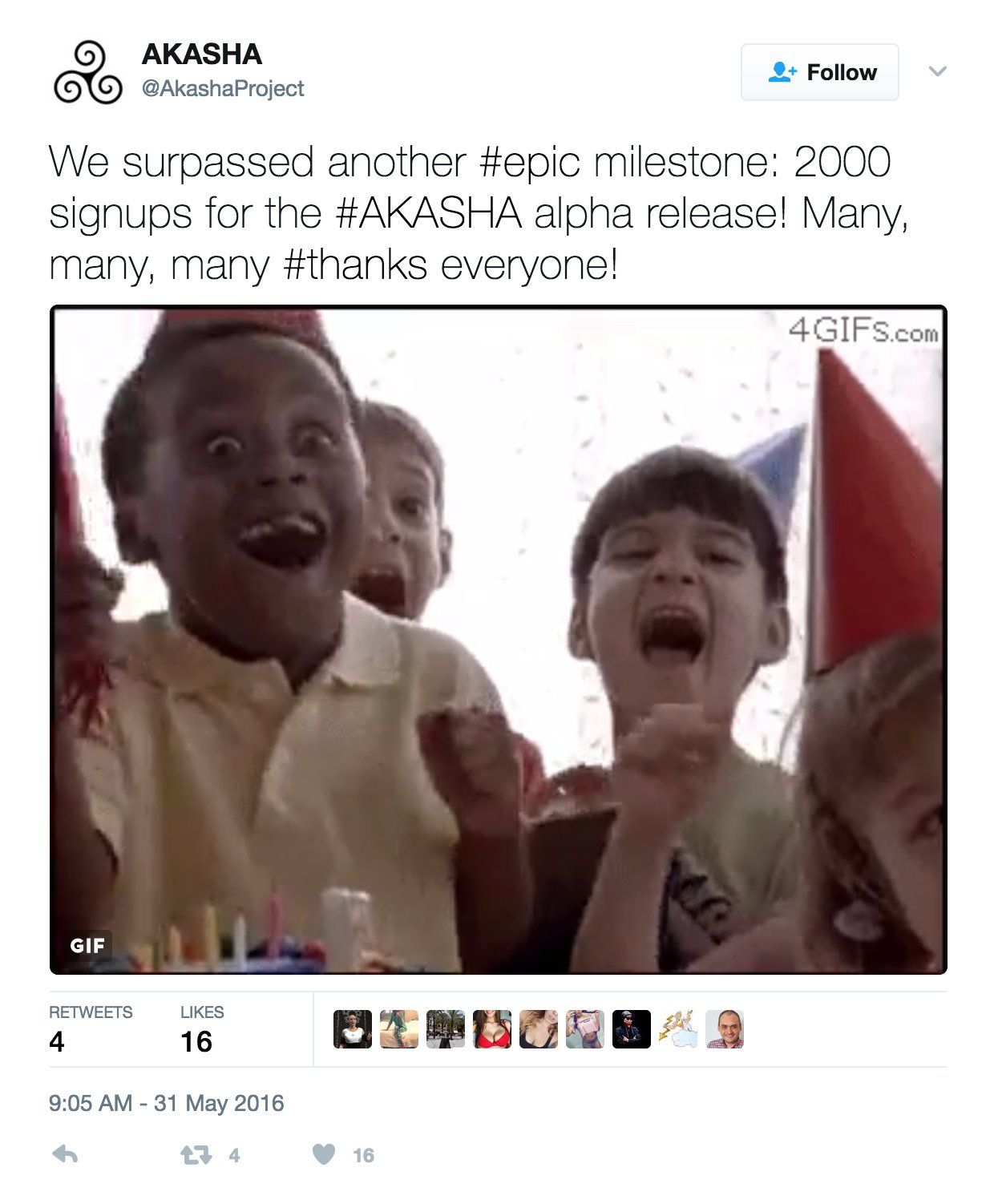
By the end of 2016 we were looking at 7000 people.
However, even more amazing than the sheer numbers is that these (you) people found our project organically.
We spent \$0 on advertising because we wanted to measure the real interest in the project. We felt that advertising would "taint" the results since we would end up analysing the efficiency of targeted ads, rather than the merits of the idea itself. We wanted to reach the people truly resonating with the idea and measure the potential of the project as a whole without any marketing gimmicks.
This leads to the assumption that those of you finding yourselves reading these lines participate- in your own way- in a new kind of enlightenment so vast in its implications that no one really understands its full ramifications yet.
To some extent it almost feels like an ant trying to figure out what an elephant is by crawling all over its vast amount of skin. Whenever it stumbles upon something new such as a leg or an ear; the ant's (limited) understanding of the "big picture" radically changes.
In our own way, I think we are experiencing something similar in the Ethereum universe. Apparently this exact type of intellectual discovery through playful exploration is what attracts the so-called "innovators" demographic described by Everett Rogers in the theory of diffusion of innovations - tenacious spirits subconsciously waiting for their cue to awaken and change the world.

It's almost as if some people are wired to be magnetically drawn to creating, influencing and pushing new paradigms beyond the "tipping point".
Although the parallels between AKASHA and the diffusion of innovation theory deserve a whole post on their own; in this one I would like to draw your attention to something else.
If you are reading these lines, it's very likely that you are one of the so called "innovators" in our current society. Or rather one of us - part of a worldwide community of thousands of people- co-creating today a better Web of tomorrow.
In this light, AKASHA can be seen as an ethereal beacon, drawing like-minded individuals capable of truly changing the world, in this case by leveraging new technologies.
Through playful experimentation we're exploring a future in which our collective memory, freedom of expression and privacy are not outsourced anymore - a future in which human relations are not owned by corporations.
With your help we were able to make the first steps and prove that this future is possible.
The First Year: Root, Growth & Evolution
"It is our hope that years from now, we will look back at today --- May 3rd, 2016 --- as the day on which the idea that freedom of expression can be a default standard on the web took root on the Internet."

Following your amazing warm welcome, we felt both energized and motivated to give it our 110% and deliver something good as soon as possible. It was becoming clear that we haven't been crazy for spending the last several months of our lives working on this....or that we weren't the only ones who were crazy! :)
Fast forwarding a few months - on the evening between 22-23 Dec - we were making the final preparations for the first public release. This is when we stumbled upon a new bug while working on the first AKASHA guide/tutorial to help people get started with our dapp. Oh snap.
For a brief moment, the overall feeling went from excitement to sadness- as we were beginning to doubt if we would get AKASHA into the hands of people this year. But before the bitter feeling could even settle in, the team was already back at their computers trying to figure out what went wrong.
This started around 21:00 and lasted until close to 00:30 when we had finally fixed things up.
Around 03:20 we were ready with pretty much everything, and then this message greeted us:
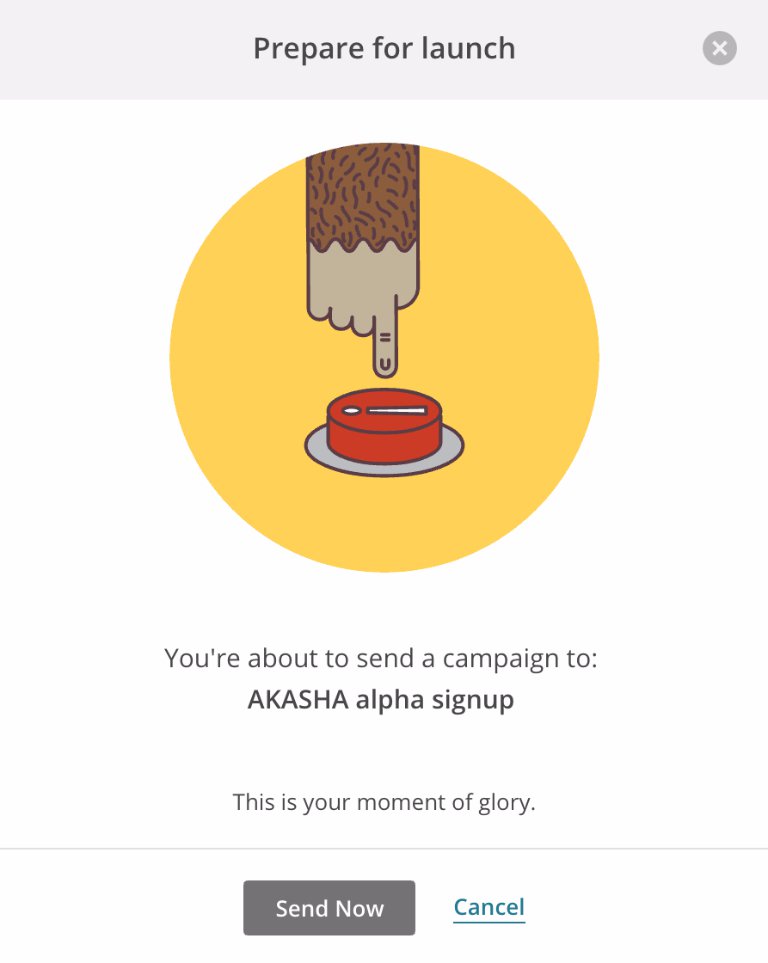
Here is a picture of our Bucharest team celebrating Christmas and the first release of the alpha. It was a Christmas to remember!
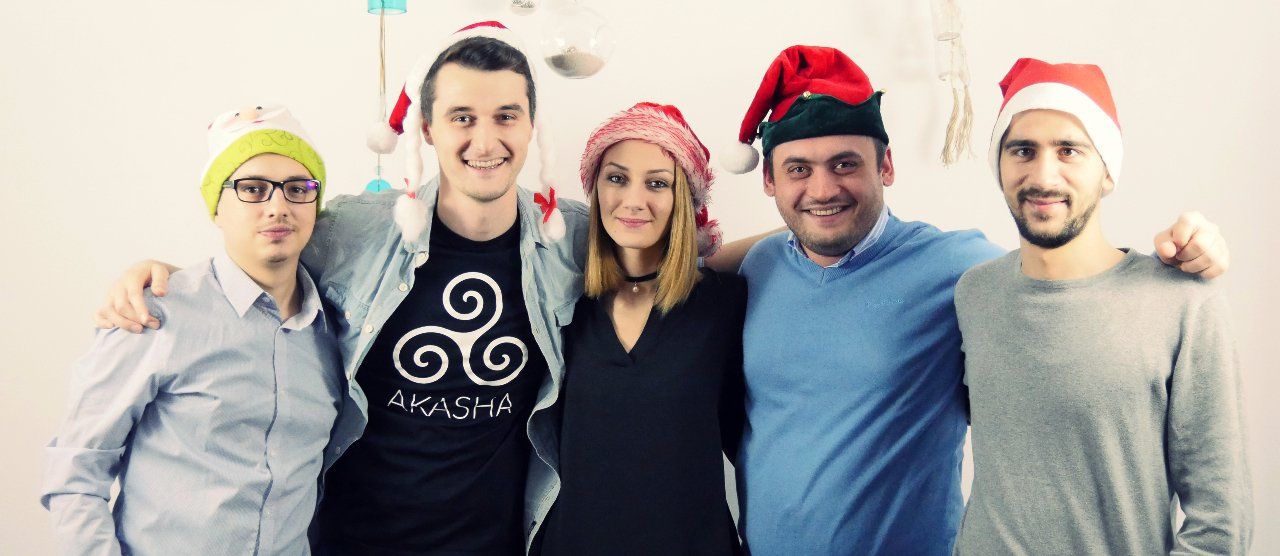
Following the release, these comments were the best Christmas present we could have hoped for!

Step by step, we learned how to fuse Ethereum and IPFS into a functional dapp, how to build decentralized identity and voting systems, how to implement IRC-like interfaces for Whisper-based secure group messaging, and how to bring to life truly private searches with our Whisper search engine experiment.
Make no mistake, it took many experiments to get where we are today, and you, the Community, shaped the course of this project through your involvement - we learned so much thanks to you!
Thanks to you, AKASHA serves as a home to over 3000 decentralized identities and almost 2000 censorship-resistant articles - summing up about 4000 micro-transaction votes.
In less than four months since the alpha public release, we have proven together that the idea can work and we are already starting to understand how we can make it work better!
I think it is time to declare that the first stages of the experiment were a resounding SUCCESS! \o/ \o/ \o/
The Next Year: New Horizons
"Only those who dare to fail greatly can ever achieve greatly." -- Robert F. Kennedy

If the first year was mostly focused on the "tech challenge" and proving that the idea can work- the next year will be mainly about exploring new horizons and pushing the experiment(s) to the next level.
The code refactoring is in full swing and expected to enter public tests around this summer. When ready, the new codebase will provide us with improved foundations on top of which we can further grow and evolve- both as a project and community.
On this note, here are some of the things we've been working on since the last blog post:
- Laying the foundations for the web version
- Improving the overall performance and stability
- Enabling two-way third party integrations with AKASHA
- Making the code easier to read and contribute to in anticipation of the open source release
- Deploying the dapp on IPFS, making it accessible through any IPFS node or gateway
- Optimizing the Ethereum dapp architecture, gas usage and modularity for the next round of experiments
We are also working on a major UI/UX redesign which will improve the discovery of content and overall user experience as a whole. Aside from the redesign itself, we are in the process of making the necessary adjustments for a transition to a user-centric design process which should open the AKASHA interface to the community for rapid iteration and experimentation.
We are really looking forward to seeing how the interface will evolve when we can tap into the collective intelligence present in this project. You, and by extension the whole Community, will be directly guiding us to find the best possible user interface with the least amount of effort possible for everyone.
After all, we are a community of innovators. We can do better than just guessing: "what might work", right? :)
We want to apply this type of thinking to other areas too.
Next Experiment: Crypto Economics
"If you aren't in over your head, how do you know how tall you are?" -- T.S. Eliot
Since the beginning, the AKASHA token was a matter of great interest for all of us. However, the amount of research and development that goes into architecting a solid crypto economic token foundation was too much for us to handle at the time. We already had a big experiment on our hands: prove that the idea can work from a technological standpoint.
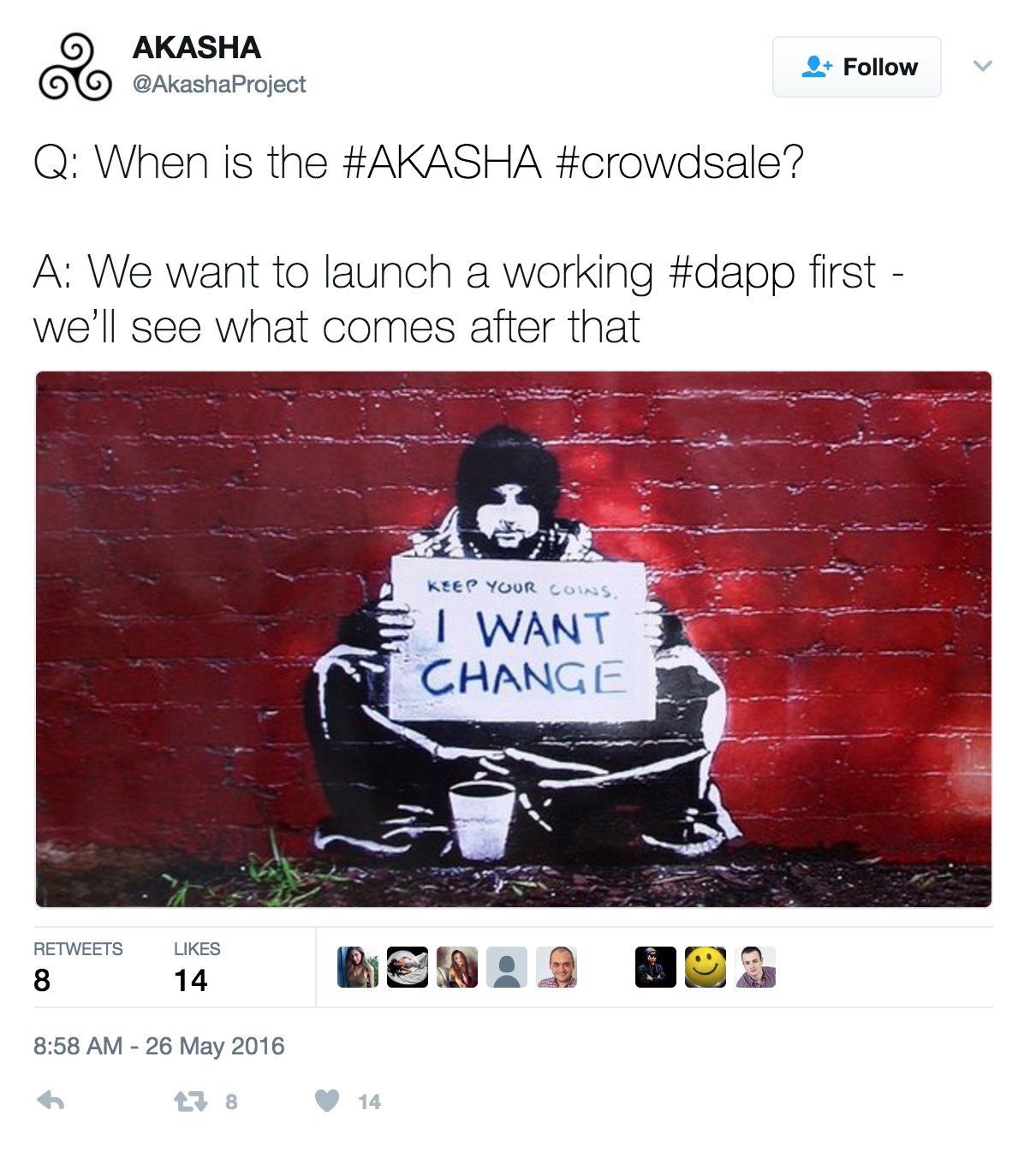
This is why we decided to treat the token aspect of AKASHA as an "experiment module" of its own- next to other interesting crypto challenges such as reputation. So we began to root ourselves in an awareness that we are just a handful of people with limited resources and big dreams.
It helped to frame it as a game- in the sense that if we can solve the "tech challenge" then we can focus our available resources on the "incentives challenge" - we have to pass level 1 before gaining access to level 2.
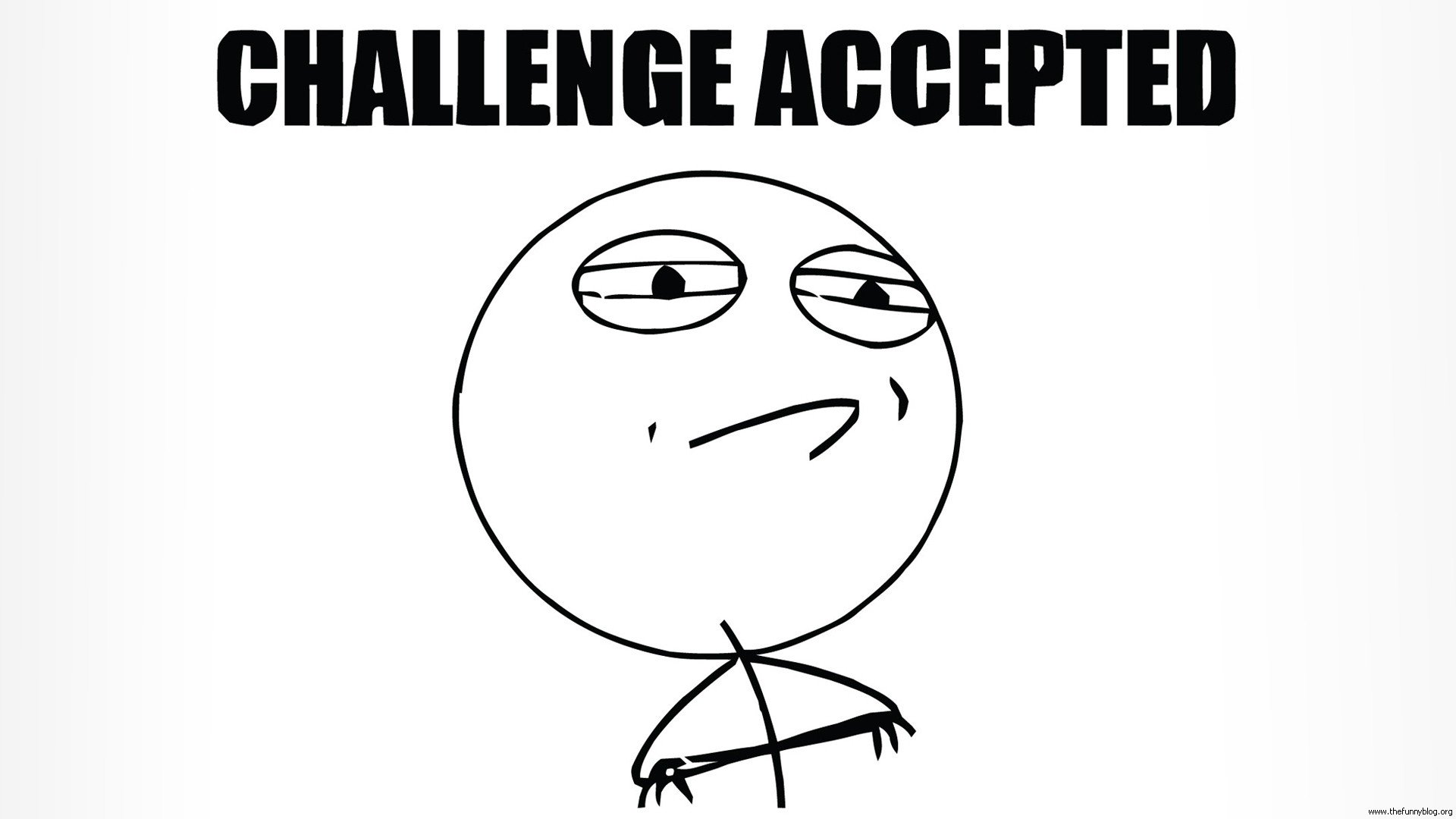
It was not the "standard" blockchain project approach - write a paper, make a website, add advisors, launch a token sale - we wanted to focus more on the "technology" in the first stage rather than "the money" anyway.
We figured that if the idea and product are solid then "the money" will follow naturally.
Now that the code refactoring is nearing completion we have started to shift our attention to the next challenge: incentives. We couldn't be more excited about it - we've been waiting for this moment for a long time!
Just a few weeks ago Vlad Zamfir visited our hacklab and shared his wisdom. It was a fun week filled with brainstorming sessions and insightful moments. Among many things, we have explored the concept of continuous token models and how the idea could fit into the whole puzzle.
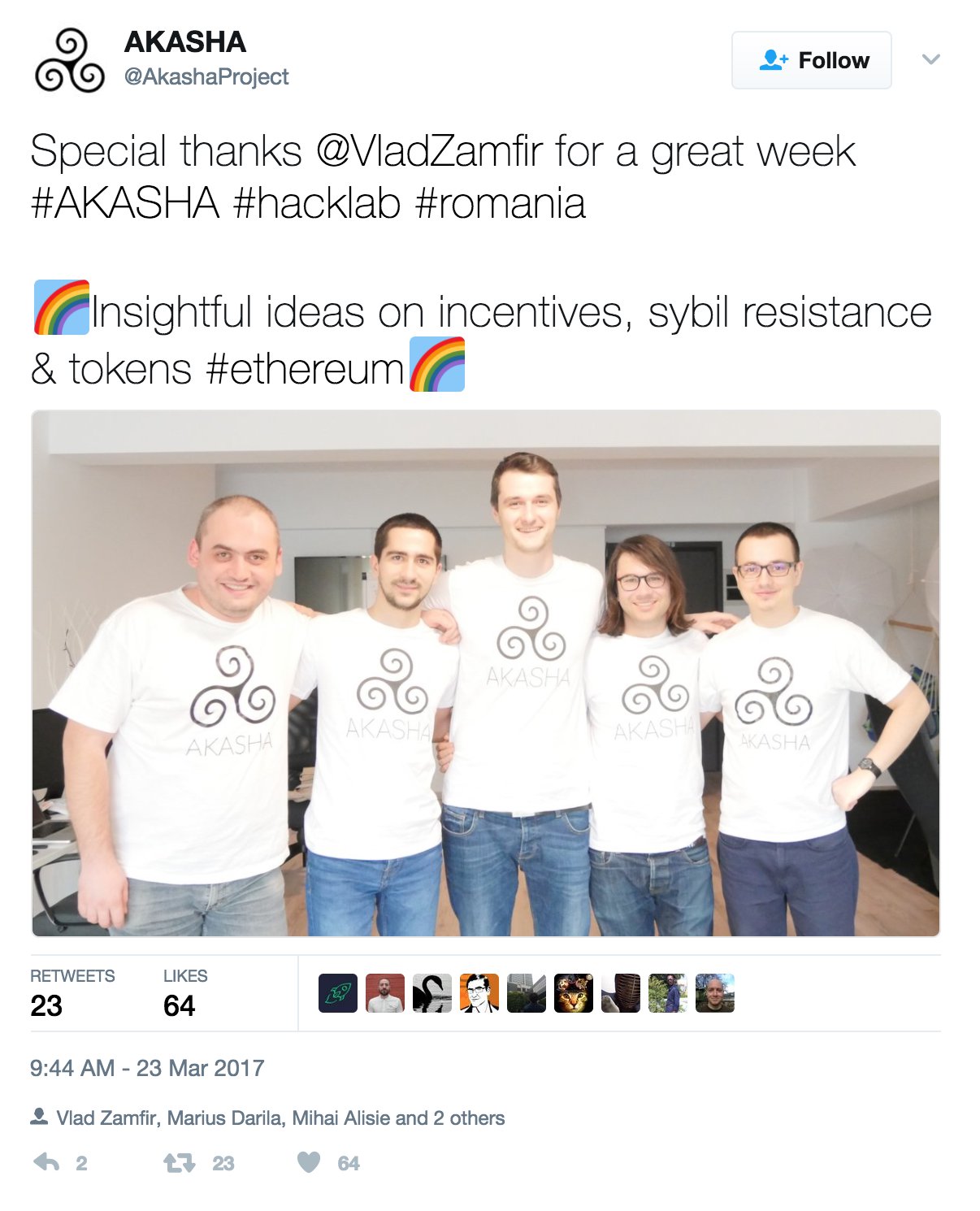
We filled the whiteboard with ideas and made notes in anticipation for the next step.
In just a few days we will enjoy the company of another special guest at our hacklab - Meher Roy. You might know him from the Epicenter show or for his contributions to crypto economic models surrounding attention economies. We met for the first time in the early days of Ethereum at the Swiss "space ship" house and have worked since then on different projects.

Recently, we began realizing that we were working, in our own way, on different pieces of the same puzzle. We plan to publish a detailed blog post covering the exchange of ideas after the visit, and we want to document our discussions and findings - hopefully capturing the genesis of something amazing.
Somewhat counter-intuitive given the current "ICO landscape", the intention is not to simply create "a token" to raise funds- but to create a framework for multiple crypto economic experiments. The main idea is revolving around changing various incentive layer parameters and parallel experimentation.
You can imagine A/B testing on the crypto economics layer; taking the most interesting token proposals and learning how they impact the health of the ecosystem and its behaviour. The most promising ideas will receive extra attention and undergo intense breakathons in an attempt to expose any weaknesses that might have escaped until this stage.
Most of the experiments will fail and that's okay, because we learn from the process.
Through these experiments we increase our chance of finding the "most amazing token idea for social networks ever". Once that is uncovered, we have built in the process the perfect environment where the idea can reach new levels of insight - since it's not evolving in one mind; but in a sea of minds made up virtually entirely of innovators.
We have found each other across thousands of kilometers and opened up a portal into an alternate future - a world where lines of code dance with atoms at the edge of singularity.
Before stepping through - I encourage you to take a moment and enjoy this achievement. You deserve it.
This is more than just witnessing history in the making. This is what building the future feels like.
How far can we take it? What's the limit? Is there really a limit in the first place?
